Ultimate Best Things To Do in São Paulo Guide (Spending Nothing Or Almost)
Travelling to São Paulo? Here is your ultimate guide (Spending nothing or almost).
São Paulo was elected in 2023 as the second most interesting city in South America.
Explore World Wide used the research score from Wikipedia in order to choose the most interesting cities around the world.
And there must be a reason why: São Paulo is the most populated city in South Hemisphere, the second largest LGBT+ Pride in the world, it has the largest Japanese community outside of Japan, 720 pizzas per minute are made around there and after pizza sushi is the most common dish consumed in this massive city.
São Paulo, just like New York, never sleeps and receives a lot of tourists yearly. Probably due to the fact that São Paulo is the financial center of Brazil and many people land in São Paulo before flying elsewhere inside the country.
Just like any cosmopolitan city, it has its problems with safety, but nothing as the media says about Brazil. If you go to São Paulo, just avoid showing off gold or expensive watches, watch for your pocket and phone while you are in crowds and never walk alone in quiet places in the dark. If you follow this, you will be completely fine. Police are always around in touristic places, so nothing to fear about, really.
So if you find yourself going to São Paulo for a job, to fly somewhere else or just to get to know the largest Latin American city of world and don't know what to do, this ultimate selection is for you:
Avenida Paulista - Paulista Avenue
Avenida Paulista is a large avenue which is really notorious among the paulistanos (how people from São Paulo are called). Back in the days, it was the most desired address for the rising merchants to construct their mansions and now is the financial center symbol of Brazil.
Now time has passed and it has become a cultural center full of museums, theaters, cinemas, book stores, restaurants, radio stations and more.
The best day of the week to go to Avenida Paulista is during Sundays because from 10 am till 6 pm the avenue is closed, so people can enjoy its most. On Sundays you will find Djs, live bands and people dancing everywhere. It is just so much fun!
A tip is: download the app Credencial Sesc for Android or Iphone and book an appointment to go to SESC Paulista, which is a cultural center where you will find a look out on the rooftop. From there you can see the whole avenue. It is for free and the food of the café is delicious and super cheap.
How to get there: Uber is always a good choice in São Paulo and works pretty well, but the metro and train are really cheap and easy to use (it can only be annoying during peak times due to the massive number of people, so if you can, avoid it).
To go to Paulista by the metro you just need to get on the Green Line and get out at Brigadeiro Station, Trianon - MASP Station or Consolação Station. And yes, there are 3 stops in total on this Avenue.
MASP
MASP stands for Art Museum of São Paulo and is located in Paulista as well. It was established in 1947 and inaugurated (believe you or not) by Queen Elizabeth II. Today it is considered the most relevant western art museum in Latin America with collections that displays pieces from Monet, van Gogh, Picasso, Rembramdt, Renoir and much more important artistics from all over the world and from Brazil.
The modernist building that seems to be floating is recognized as one of the icons of São Paulo and Avenida Paulista.
It's open from Tue - Sun and from 10 am - 6 pm (closed on Mondays - MUSEUMS USUALLY DON'T OPEN ON MONDAYS IN SÃO PAULO).
And free to visit (with booked tickets only) on Tuesdays.
Give it a check on the website: https://masp.org.br/
How to get there: It stands 5 min. walk away from Trianon - Masp Station.
Address: Av. Paulista, 1578 - Bela Vista, São Paulo - SP, 01310-200
Honourable mention of Free Exhibitions in Avenida Paulista with no booking required: Japan House (10 am - 6 pm), Instituto Itau Cultural (11 am - 8 pm), Centro Cultural Fiesp (10 am - 8 pm), Casa das Rosas (10 am - 5:30 pm).
Liberdade
As mentioned, São Paulo has the largest Japanese Community outside of Japan and Liberdade is a suburb that represents that. It is a Japanese inspired suburb located right in the city center. There you find a lot of Japanese/Asian influence in the markets, in the music and principally in the restaurants and it is easily recognizable by the characteristic lamps.
Every Saturday and Sunday you will find a big street market from 10 am to 6 pm where you can try all kind of Brazilian-Japanese fusion street food. They are awesome! You must try hot rolls (Brazilian deep fried sushi) and also the Yakisoba (noodle soup with a Brazilian twist). For something more authentic, you should go to Momo Lamen House where they serve their own fresh house noodles.
 |
| Momo Lamen House Restaurant |
How to get there: You will end up right in the street market if you take the Blue Line and get out at Japão - Liberdade Station.
Catedral da Sé - São Paulo's Cathedral
Also formally called Catedral Metropolitana Nossa Senhora da Assunção e São Paulo (what a long name). This beautiful Gothic Revival church is 111 metres (364 ft) high and the main cathedral in São Paulo. It might be surrounded by homeless, what is really sad, but is also guarded by police, what increases the safety feeling a lot.
The most interesting fact about the Cathedral is that exactly where the church stands is the Ground Zero of São Paulo city and the triangle that the streets form is the São Paulo foundation, where this huge and fun city was born.
How to get there: It's just in front of Sé Station in the Blue Line. But it is a really safe walk from Liberdade if you want to do both and it doesn't take longer than 15 min.
Address: Praça da Sé - Sé, São Paulo - SP, 01001-000
Honourable mention: Pateo do Collegio is the first building in São Paulo, which was a college to convert native people into christians first. It was established by José de Anchieta who is also the founder of São Paulo. It is free to get in and see the very first and original wall, but for the museum is necessary to pay for the ticket. It is open daily (apart from Sun and Mon) from 9 am to 4:45 pm. It is 5 min. walk from São Paulo's Cathedral. Or get to know extra details about this amazing place in our much more detailed post and learn much more about São Paulo's origins: Meet The School Yard Where São Paulo Was Born
Travelling to Brazil or Overseas? Don't Forget to Get a Plug Adapter. It Might Save Your Life.
This is an affiliate link. That means that if you purchase using it you will be helping us without any extra cost of any kind and will support us at the same time!
Mercado Municipal de São Paulo - Municipal Market of São Paulo
Informally called Mercadão by locals, it is a beautiful municipal fruit and deli market established in 1933. There you find numerous typical dishes from Brazil and from São Paulo. Feel free to try fruits at the fruit stores without any cost but an honest tip is: don't stay for too long and don't give them too much attention. They try to be really persuasive and the fruits are much more expensive than normal markets. But the food is incredible, you should try the Mortadela Sandwich which is a must and a very typical sandwich in São Paulo City.
The stores and restaurants are really charming in general and it is really fun to look around and see so many varieties of fruits and delis. Grab a freezing cold beer, a Mortadela Sandwich and thank me later.
Also at Mercado Municipal, it is nice to try Pastel which is a fried pastry created by the japanese immigrants who tried to make a living there, but now it has become another symbol of Brazilian gastronomy.
It's open daily from 8 am to 7 pm.
How to get there: I recommend going by Uber due to the crowds you will face walking around there, what might not give you a good feeling of safety. But if you don't fear that, the fastest way is to go by metro, taking the Blue Line and getting out at São Bento Station. It will be a 7 min. walk in total.
Address: R. da Cantareira, 306 - Centro Histórico de São Paulo, São Paulo - SP, 01024-900
Parque Ibirapuera - Ibirapuera Park
Ibirapuera is the most famous and loved park in São Paulo which could be called Brazilian Central Park. Right in the heart of the city and in a really beautiful suburb, take some time to breath some fresh air in the concrete jungle. Take a walk around or ride the double bike with your partner, that will definitely be lots of fun. There might be free events happening around there, so it's always good to check their instagram out.
There you can also find some architecture works around the park made by Oscar Niemeyer, a famous modernist architect who is also responsable for many futuristic designs in Rio de Janeiro, such as the Museum of Tomorrow and a famous residential-commercial building in São Paulo called COPAN, the vertical city.
It's open daily from 5 am to 12 am.
How to get there: An uber would be the best option because there is no direct public transport towards it but you can also get the Green Line and get out at Ana Rosa Station. It's a long 40 min walk, but you can get to know more and enjoy a safe walk in the city.
Address: Av. Pedro Álvares Cabral - Vila Mariana, São Paulo - SP, 04094-050
Sala São Paulo
Sala São Paulo is a concert hall and is considered one of the best halls in the world. It is the house of OSESP which stands for Symphonic Orquestra of São Paulo State. It iscurrently being conducted by the reputed conducter Thierry Fischer who has just renewed his contract for the next year.
But the best thing is that Sunday Mornings are always for free, but it is necessary to book your tickets online on before hand every Monday from 10 am. If you don't get the tickets on time, don't worry. There are always empty seats, you just need to ask for it before the concert starts. You probably will need to wait for a bit, but it will be worthed.
The hall is beautiful just like the acoustic, but the area called Balcão Mezanino has the best sound and view.
Sunday Morning concerts usually start at 11 am.
How to get there: get the Yellow line and get out at Luz Station (which is the most beautiful and the oldest station from São Paulo). Follow the Platform 1. The end of Platform 1 was fully designed for your safety so you don't need to leave the station to get to Sala São Paulo. Just follow the signs that points towards SALA SÃO PAULO and you will be there in no time.
Address: Praça Júlio Prestes, 16 - Campos Elíseos, São Paulo - SP, 01218-020 (inside the old Júlio Prestes Station).
Pico do Jaraguá - Jaraguás Peak
Jaraguás Peak is the highest peak in the whole São Paulo City. That is a place that most travel guides (if not none) will never mention and that's probably because it's a bit far from the city center. However, trust me. If you have got some time to spare and would like to see some real nature, you will not regret it.
Try to go for a hike following the multiple tracks and also the one (a bit more intense) to the top of the peak (1.135 m / 3724 ft high) and for sure you will find some monkeys, luckily some coatis, sloths and native trees such as açaí palm trees (yep, the same one used for making smooth bowls). The view is just amazing and you can see great part of the city from there and even more.
A brief text about its history and mineration:
São Paulo is located in a biome called Atlantic Forest which has almost fully disappeared, but the Jaraguá State Park is still fully preserved and you will have the chance to experience the original biome of São Paulo's region and how it might have looked 500 hundred years ago before the Portuguese colonization.
The Jaraguá State Park is just on the side of a indigenous reserve that can be seen on the way. That's because those lands were sacred before the Portuguese took over. Inside the park you will find also the house of an important Bandeirante which is the denomination for the group of men who were responsible for the exploration of interior lands in Brazil between the 16th and 17th centuries.
The main interest on those lands used to be gold extraction which was really abundant during that time so it quickly became the very first gold mine in Brazil.
How to get there: I recommend again taking an Uber (1 hour drive from the City Center), but this time because the station is a bit far away. But if you don't mind walking like me, you can just get the Green Line and switch the metro by the train at Tamanduateí Station via Jundiaí. And then you get out at Vila Clarice Station. It will be 30 min. walk to the Jaraguá State Park and pretty safe.
Address: R. Antônio Cardoso Nogueira, 539 - Vila Chica Luisa, São Paulo - SP, 05184-000
Rua Augusta - Augusta Street
São Paulo is also the night life center of Brazil and I would even risk to say that it has the best nightclubs and bars from the whole country (even better than Rio, but don't let them know that I said that. shhhh). I have even read once a funny text saying that Rio de Janeiro was specialised in the mornings/afternoons but São Paulo was a bigger deal when talking about night, I think I have to agree with that.
Augusta Street is a street that goes through Avenida Paulista. It's split in a half by the avenue into: Low Augusta and High Augusta (Baixa Augusta and Alta Augusta). Low Augusta is where the clubs are more concentrated and High Augusta is where you will find more bars and restaurants. So if you are a night life person, you will love getting lost around there.
Doing some research, it is possible to find some VIP tickets for parties if you add your name to the list on the respective websites.
How to get there: within 1 min. from Consolação Station in Paulista. Just on the side, actually.
Museu do Futebol - Football Museum
Everybody knows that Brazil loves football and is considered the Country of Football due to their obsession with such sport. The country stops to watch the matches (I am not joking, they literally stop working to watch Brazil playing during World Cup matches).
The Football Museum was established as a tribute to all the rituals that are part of enjoying a match and its heroes. It's inside Pacaembu Stadium and really fun if you are a football or soccer lover. It has a great collection, documents and recordings from many iconic moments in the Brazilian football history.
It's open daily (apart from Monday) from 9 am to 5 pm.
BUT it's free on Tuesdays, however it is necessary to book it.
Check it out on the website: https://museudofutebol.org.br/
How to get there: it's 30 min. from Consolação Station for those who are brave to walk.
Address: Praça Charles Miller, s/n - Pacaembu, São Paulo - SP, 01234-010
Museu do Ipiranga - Ipiranga's Museum
On the Ipiranga riverbanks in São Paulo the emperor Dom Pedro I shouted: Independence or Death! It happened on the 7th of September 1822, the same day that Brazilians celebrate their independence from Portugal. The circumstances of the event and the heroes remain controversial being target of discussions until nowadays. But a fact is that a beautiful and huge neoclassic palace was constructed in order to celebrate it and inaugurated in 1895.
There you will find amazing paintings, collection of objects from that time and even some archeology. On the rooftop you can gaze at the park and monuments that surround the museum. So take some time to learn a bit more about Brazilian history and be enchanted by its stunning architecture.
It's open daily (apart from Monday) from 10 am to 5pm. It's necessary to book your ticket BUT it is free for everyone on Wednesdays and booking is not necessary (you can get your tickets at the entrance).
How to get there: if you go by metro, you can take the Green Line and get out at Santos-Imigrantes Station. It will be 25 min. walk from there or 25 min by Uber.
Address: Parque da Independência - Ipiranga, São Paulo - SP, 04263-000
Beco do Batman - Batman Alley
Billboards are strictly prohibited in São Paulo city. This law was created in order to reduce the visual pollution that is as large as the city. Instead, you will find lots of street art, sometimes even covering a whole building!
Following that, Batman Alley is a urban collection of little streets fully decorated with colourful street art. Being located in the Vila Madalena suburb, you will find lots of bars and restaurants everywhere what helps it to become a really fun tourist attraction. If you are looking for food, that is the place!
By the way, together the suburbs Vila Madalena, Pinheiros and Vila Mariana form the most bohemian part of São Paulo, being the best places for dining out in the whole city.
Because it is in the streets, Batman Alley is open 24/7. But the restaurants and bars open mainly after 5 pm.
How to get there: It's a 17 min. walk from Santuário N. Sra de Fátima - Sumaré Station (I just realized Brazilians love to give long names to stuff) or Vila Madalena Station in the Green Line.
Address: R. Medeiros de Albuquerque, 82-154 - Jardim das Bandeiras, São Paulo - SP, 05436-060
This was the Ultimate São Paulo Guide - Spending nothing or almost. Don't forget to subscribe for more information and tips. Leave in the comments if you have any inquiry or critic. Enjoy it and see ya!











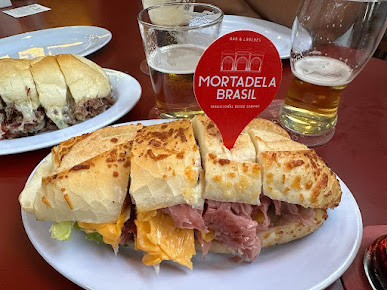




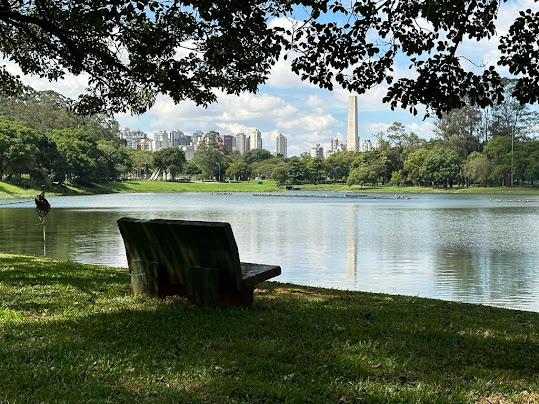

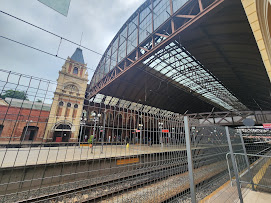











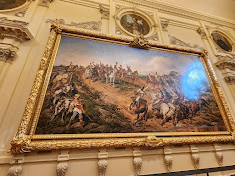

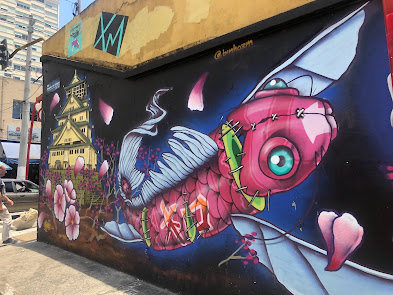




Comments
Post a Comment